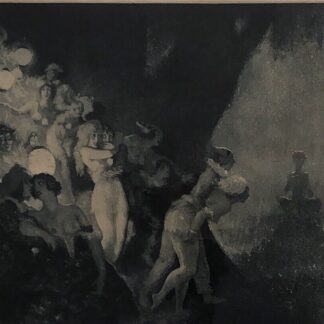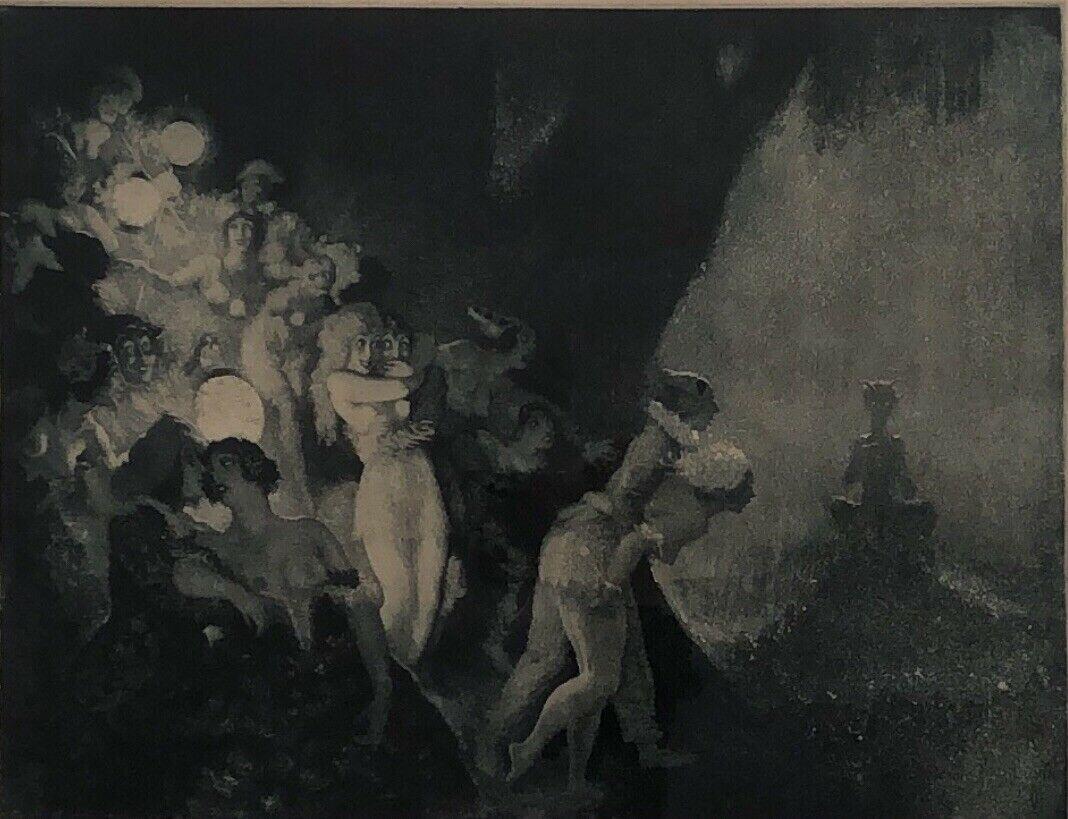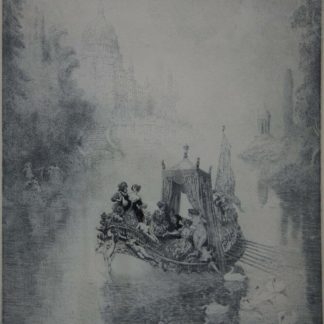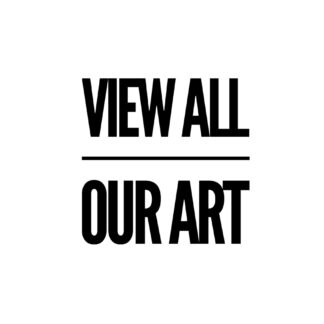Norman Lindsay (Aust 1879-1969)
Showing all 3 resultsSorted by latest
-

“Moonlights Piper” 20/55
Norman Alfred William Lindsay (Australian 1879 – 1969)
$9,100.00 More InfoAdd to cart
Showing all 3 resultsSorted by latest
Norman Lindsay (Aust 1879-1969) Bio
Introduction:
Norman Lindsay achieved the mantle of one of Australia’s most significant artists of his generation, he was born in Creswick, Victoria, the son of Irish Surgeon Robert Charles William Alexander Lindsay (1843–1915) and Jane Elizabeth Lindsay (1848–1932).
His grandfather Rev Thomas Williams was known missionary throughout the South Pacific Islands in the ’50s and ’60s and author of one of the island classics, “Fiji and the Fijians.”
Norman was born into this family of creativity and talent, his mother had a talent for drawing as a girl, being the daughter of an architect, with her children taking naturally to Art; his older brother Lionel studied at the National Gallery, and worked as a freelance artist, engraver, and journalist.
Early in his career, Norman led a Bohemian life; he and his older brother Lionel worked and collaborated on local magazines and publications in Melbourne and Sydney.
Both brothers had their own style, with the less controversial Lionel becoming a trustee of the National Art Gallery of New South Wales in 1918.
Norman body of work was promoted eagerly by Lionel, and the pair were great friends. Norman became known for his tireless work ethic; he was a productive and prolific artist, a sculptor, writer, cartoonist and scale modeller, producing work in varying media, such as pen drawing, etching, watercolour, oil and sculptures in concrete and bronze.
He had three sons, Jack, Raymond, and Philip to his first wife, Kate, and two daughters, Jane and Helen, to his business manager, printer, and model Rose; she became his second wife in 1918.
He toured Europe in 1909, where he visited the then South Kensington Museum, where he produced sketches of model ships, which was a lifelong interest of Norman.
An Accomplished Writer:
He returned to Australia in 1911, illustrating the cover of Henry Lawson book, “While the Billy Boils”, and writing the children’s classic “The Magic Pudding” in 1918.
It was quoted in the newspapers of the day as “A fine tale illustrated by splendid drawings executed by an artist of rare gifts “The Magic Pudding” is a thoroughly good production”.
The Magic Pudding children’ book tells the story of Bunyip Blue Gum, the Koala that sets out to travel the world, where he meets the sailor Bill Barnacle and the penguin Sam Sawnoff.
Bill Barnacle and Sam Sawnoff, own a magic pudding that constantly reforms itself into a whole pudding over and over again no matter how much they the pair eat.
The pudding is called Albert; it has thin arms and legs, is bad-tempered and lacks manners. His only goal is to be eaten and survive; Bill and Sam entice Bunyip to have lunch with them before setting off on the road together.
Bill tells the tale of how Sam and he were once shipwrecked on an Iceberg with a ship’s cook, where the cook created the pudding and gave it to the pair. The two companions now must defend the magic pudding against Pudding Thieves who want it for themselves.
The Magic Pudding is thought to have been created to settle a dispute: where a friend of Lindsay Bertram Stevens argued that fairies are what children like to read about, not food and fighting that Lindsay put forward.
Published in 1918, The Magic Pudding is recognised as a children’s classic and continues to be reprinted. Esteemed writer Philip Pullman described The Magic Pudding as “the funniest children’s book ever written” and is his favourite book.
Not all of Norman’s writings had rave reviews; some were banned due to censorship laws; novels like “Redheap” (1930) Age of Consent” (1938) were both banned in Australia for over 30 years from first publication even though it has had remarkable sales in America.
The “Age of Consent” book was made into the 1969 romantic comedy-drama film and starred James Mason and Helen Mirren.
Its a story is of an ageing artist who befriends a young woman that he eventually pays to pose as a model for him, as the relationship builds; she reinvigorates him, becoming his renewed inspiration for art practice and his long-awaited artistic muse. Ironically Norman died the same year the film was released.
Another of his books titled “Creative Effort” is thought to have influenced other artists, poets and writers such as Francis Webb, Kenneth Slessor and Hugh McCrae.
Norman is said to have had the most significant impact on the visual art side. He introduced Australia to a world inhabited by nude nymphs and satyrs influenced by the voluptuous paintings of Flemish painter Rubens and the Swiss painter Arnold Böcklin.

His controversial art form, for its time, was groundbreaking and tested the boundaries of what could be considered acceptable to the public; the broader arts community widely overlooked his stand-alone attitude to his controversial Art and the censorship that followed.
One such early work was the artwork titled “Crucified Venus” (1912) exhibited in 1913 at the National Gallery, which was turned to the wall by the committee of the Gallery based on their disapproval of its depiction and thought to be just too offensive, and only to be reinstated to public view at a later stage.
Julian Ashton, a member of the Gallery, threatened to remove all the works which would only bring more attention to Normans Artworks in the end, Norman artwork ‘Crucified Venus’ was designed to get a reaction out of the audience and whilst its’ subject matter did stir up controversy (as the artist intended) it overall was received well and was highly praised by its’ audience.
As reported by the Melbourne Herald, “Sydney women have expressed their hatred of the nude in Art, and Norman work in particular”
Many of his contemporaries smiled at the criticism and could be summed up in the following statement: “Who would dare to criticise Norman Lindsay as an artist? There is no one in Australia competent to do so. Norman has probably the most fertile imagination of any artist in Australia today; one might even say, in the world. It would be taking a big responsibility to put chains on this genius and forbid him to move about within the orbit of his Art. Compared with Felicien Rops (Belgian 1833-1898) and other well-known and accepted artists, Norman is pure. The bulk of his work is unsuggestive; the technique of all is beyond cavil. We should only be making fools of ourselves if we suggest that he be shut out from reputable exhibitions because he paints and draws nakedness. To take this line would be to exclude many a masterpiece. Never forget that what is morality today is discarded tomorrow. The history of civilisation is full of these ‘volte-faces.’ What I say is, ‘Be proud of Norman for his perfections, and don’t worry yourselves about his subjects.”
Others have stated: “His excellent understanding of technical presentation and artistic form was more than adequate, silencing his critics and leading him on a lifelong personal campaign to break down hypocrisy.”
The controversy surrounding his Art Works was not unnoticed, a generation knew him as the “artist that paints the nudes” and explores the boundaries of Art, considered today as early artistic freedom of speech, which Australian artists have practised and demanded the right to practice for over one hundred years.
Famed artist and teacher Julian Ashton found him in Melbourne and enticed Norman to Sydney, Norman had just finished illustrating Bocaccio, and Ashton hoped to induce friends to subscribe to send the youngster to Europe.
Norman got work on the ‘Bulletin’ and has remained faithful to the country that gave him birth. Ashton said: “He was glad that Norman did not leave Australia, and Australia is also pleased.”
Norman’s early drawings were influenced by his study of the classics and Rubens and were full of a defence of paganism. His women, sound, healthy wenches, fit companions of his satyrs and rollicking topers.
Ashton said: “I do not think Norman will draw Madonna’s or angel-faced babies, of which the world has plenty.”
Norman was recognised as one of the foremost black-and-white artists of the world. Norman stands today the unrivalled master of all who bows the knee before the most repressive of mediums — Pen and Ink.
Norman work was shown at the Royal Academy in 1923 and 1924, admirers quoted: “That norman will stagger the world when they see the coming Australian Exhibition in London.”
He once said: “Our hearts must recoil from the democracy of Death”, but it is death that will proclaim Norman Lindsay to the world as the genius he is.
Norman lived out his life in seclusion at his country home at Springwood, he claimed not to have seen newspapers in years and criticisms of his works, which he exhibited periodically.
The local Springwood Storekeepers frequently received cheques signed by Norman Lindsay, and on weekends, proudly displayed them to visitors a sign of the great artist’s patronage.
Today Norman’s artworks continue to climb in value; his oil painting “Spring’s Innocence” (1937) was sold to the National Gallery of Victoria in 2002 for $333,900 and set a record price for Norman’s artworks.
His oil on canvas titled “The woman I am – woman I was, woman I’ll be” was sold by Sotheby’s for $300,000 in 2009.
Collections:
- An extensive collection of his work can be viewed at his previous Faulconbridge home in the Blue Mountains New South Wales, now the Norman Lindsay Gallery and Museum, owned by the National Trust of Australia (NSW).
- The University of Melbourne “Ian Potter Museum of Art” holds an extensive collection of his works, including major oil paintings, watercolours, pen and pencil drawings, etchings, an etching plate, two ship models and a plaster model for a fountain at the artist’s home.
- The NGV also holds an extensive collection of his works, plus many of Norman’s works reside in private and corporate collections.
If you have more info on Norman Lindsay (Aust 1879-1969) and you would like to share, please contact us via email.
Additional Links


